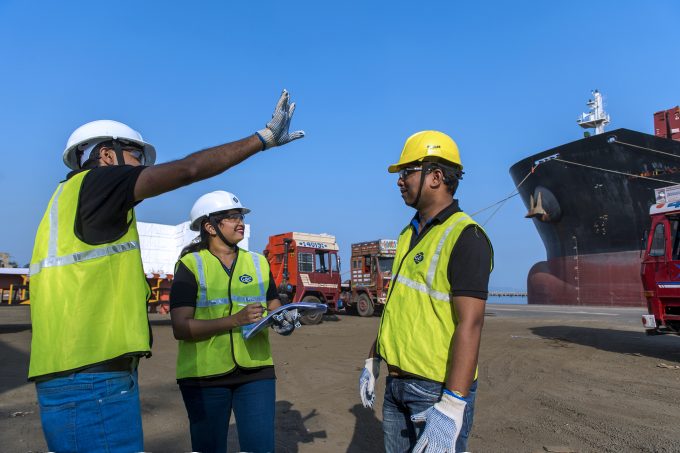DVZ radar: DHL Express awaits the next e-commerce star
It is all about networking

India is one of the fastest-growing economies in the world, with a projected annual GDP growth of 7.5% in 2017-18. The country’s growth is underpinned by sea transport, which accounts for more than 90% of India’s international trade by volume and 70% by value.
Historically, multinational companies have found access to the Indian market challenging. However, the payoff is significant for those able to navigate this relatively complex market. One such company is GAC India, which has grown rapidly since its establishment in 1983 to become a key player in the country’s shipping and logistics services sector.
Overcoming challenges
Infrastructure is a key enabler to economic growth. However, India’s ports and logistics sectors have not developed at a pace that parallels the country’s economic growth. This is due to the historic lack of modern port facilities, infrastructure and road connectivity.
The Indian government has unveiled a string of initiatives to address these operational inefficiencies. One example is the Sagarmala Project, which aims to leverage the untapped potential of Indian ports and boost India’s trade competitiveness. So far, 415 projects have been identified under this initiative, including port modernisation; port connectivity enhancement; port-linked industrialisation; and coastal community development.
Relaxing investment regulations
The Indian government has rolled out policy and regulatory reforms to make it easier to do business in the country. Through these reforms, the government aims to encourage private sector participation and investment in the development of logistics infrastructure. This is reflected in the improvements in India’s rank in the World Bank’s annual Ease of Doing Business index.
To promote the growth of the ports and logistics industry, the government has allowed 100% foreign direct investment (FDI) for all logistics services – apart from air cargo and courier services – and for projects related to the construction and maintenance of ports and harbours. The efforts to simplify investment regulations are evident in increased FDI inflows: from $31bn in the 2013/14 financial year to $45bn in 2015/16.
These robust regulations have propelled India to second position in the 2017 Agility Emerging Markets Logistics index. Notably, India held the top spot as the country with the most potential to grow as a logistics market in the Market Size & Growth Attractiveness sub-index.
Uniform taxation across India
Currently, the logistics sector in India is entangled in complex tax structures, whereby companies are required to pay multiple state taxes when transporting goods inter-state. Recent reforms introduced the Goods and Services Tax (GST), which will replace the numerous taxes on goods and services with one uniform tax across the country. Not only will this improve competitiveness and ensure compliance, but the new tax structure will also deliver greater investment and economic growth.
GST is set to be launched next month, and will radically change the business landscape of the logistics sector in India. It will allow greater optimisation of supply chain networks, allowing the free movement of goods between states and trimming the costs of logistics in India by an estimated 20%. Companies can take advantage of the new tax regime to set up integrated warehouses in the most cost-viable locations instead of smaller warehouses in each state.
As the government moves ahead with new policy measures to modernise the ports and logistics industry and alleviate obstacles to new growth and development, global companies with local knowledge will be well placed to take advantage of the new opportunities that the market will present.
This is a guest post by Gracias Thevar, chief operating officer of logistics for GAC India
Comment on this article
R.GOPIKRISHNAN
June 27, 2017 at 2:47 amGST – related to Goods & Service Tax Levy/waiver in India for the subsidies of product which impact economic. Basic impact on price to be seen on transport which is the most vital source of the economic for that” FUEL”
Petrol & Diesel Prices are not brought under GST. Now for petrol and diesel the central excise duty is 23% and state VAT is 34% . Total tax is 57%. If these essential products are brought under GST. The maximum tax will be only 28%. which means the price of the petrol and diesel can come down almost 50%. Public at large will be benefited.